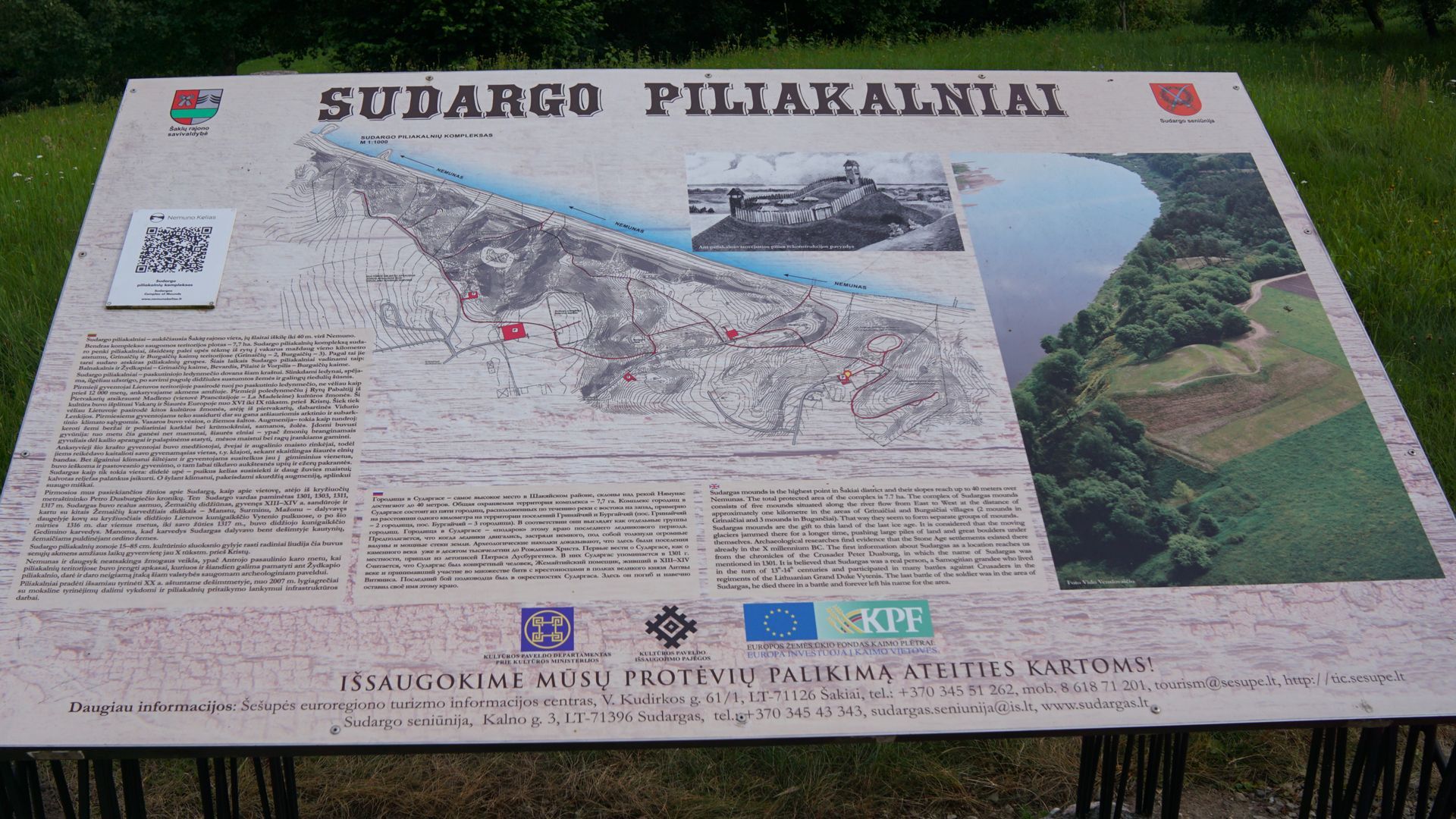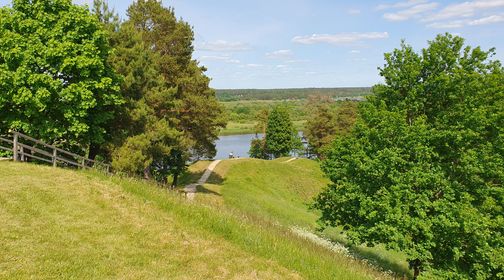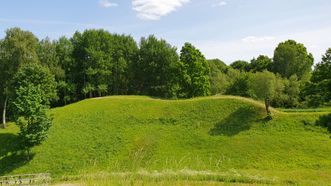
The blue of the Nemunas strip strikes with its brightness, and the flickering countryside on the river bank is clearly visible. While standing on the complex of steep-sloped mounds of Sudargas, you can feel the deep history roots wrapping around your legs from beneath the earth. Along the stream of the river the proudly standing mounds of Balnakalnis, Žydkapiai, Bevardis, Pilaitė and Vorpilis show no compromise when comparing their great history and beauty to that of the big brother – Kernavė Complex of Mounds. There are just a few such complexes in Lithuania: Kernavė, Medvėgalis and Sudargas. The latter one was also among the strongest defence centres of the country in the battles against the crusaders! Having climbed on the crown of Bevardis, you are welcomed by stone monument "In Commemoration of Sudargas Castle Defenders”, which reminds of a painful tragedy. It was built in 2007 when commemorating the 690th anniversary of the collapse of the Sudargas Castle. You can feel the determination, stamina and courage of the ancient Lithuanian fighters by touching the cool stone with your hands.
And it was great indeed. Sudargas, a well-known Samogitian leader, led a squad of Lithuanians to battles determined to defend the beloved land. Together with warriors Mantsas, Surminas and Mažonas this fearless warrior ruled the regiments of the Grand Dukes Vytenis and Gediminas, and successfully marched to the lands of the crusaders and destroyed their fortifications. Unfortunately, in June 24, 1317 they failed their struggle in an ongoing attack by the crusaders. They destroyed the Sudargas Castle and all the buildings belonging to the complex of the castle from the surface of Sudargas Mound and destroyed the village. It is supposed that the battle claimed the life of the brave warrior Sudargas, since nobody ever saw him alive after the battle. To commemorate the anniversary of the battle and to confirm the viability of the area now the mounds annually gather not only the entire town, the name of which came from the famous warrior Sudargas, but also all of the region and Lithuania. This festival has become not only interregional, but also international.
The town of Sudargas reminds of another historic period that is significant to Lithuania. Martynas Sederevičius, the priest ordained by the Bishop Motiejus Valančius also settled here as of 1873 and was appointed the Dean of Sudargas. The town allowed the priest to reveal his talent of a fighter for the preservation of the Lithuanian heritage. Here, supported by the confessional and civil society led by patriotic intentions, M. Sederevičius prepared and published about 30 booklets and prayer books, established a dissemination organisation for religious literature, the members and dean of which transported books from Prussia to Lithuania and distributed them in Suvalkija, Samogitia and even beyond the borders of Lithuania. The cleric, called as the Father Book-smugglers, travelled by carriage himself at nights to distant parishes and spread the Lithuanian word. When commemorating the centenary of the regaining of the Lithuanian press in 2004, Sudargas School was renamed after Martynas Sederevičius in his honour. Reflections of the daily life and relicts of the battles can be found on the mounds. It was and still is part of the life of the neighbouring villages. The mound, as a historic diary, has been collecting records of the daily life surrounding it until now. All we need is a wish to read them. Now let's look at the horizons and the beautiful landscapes of the Nemunas winding. Sudargas will awaken many senses to its visitors. With the help of the relicts of its past, it will speak about the greatness of the past centuries of our country, the unforgettable dangers of the book-smugglers, and its exceptional beauty of its nature will grant everyone with spiritual comfort and pride.
Points of interest
16
Food
0
Accomodation
0
Loading...
©2025 trip.lt

















